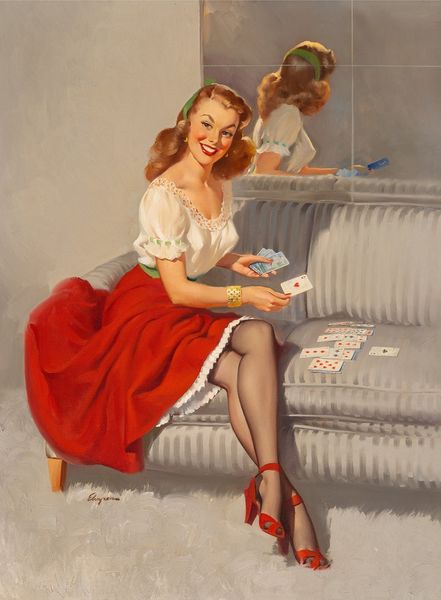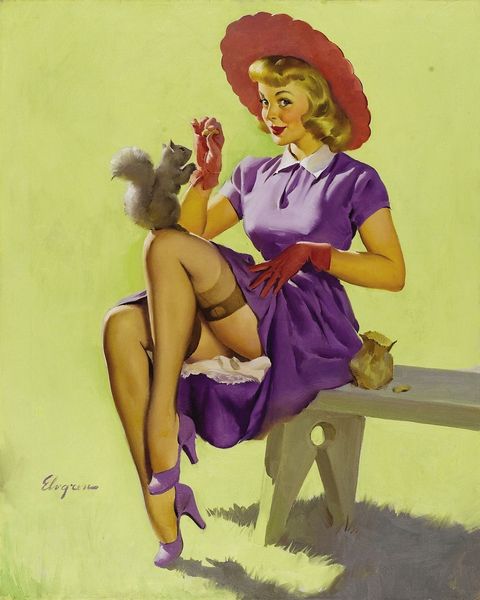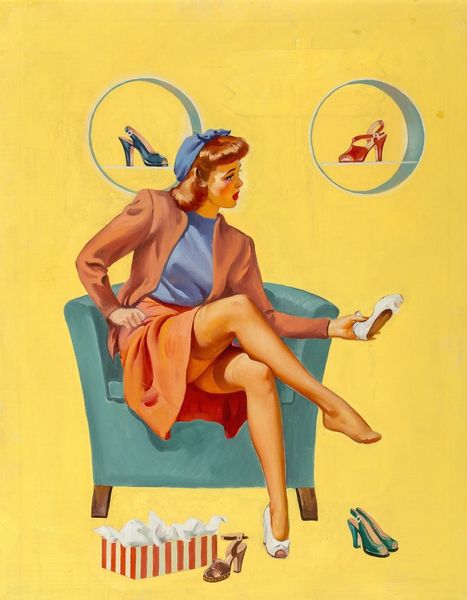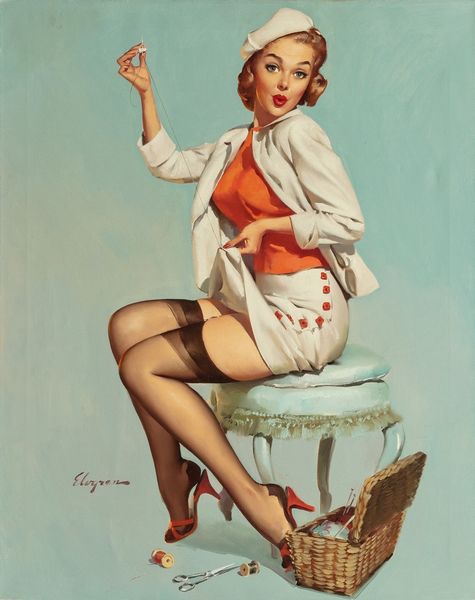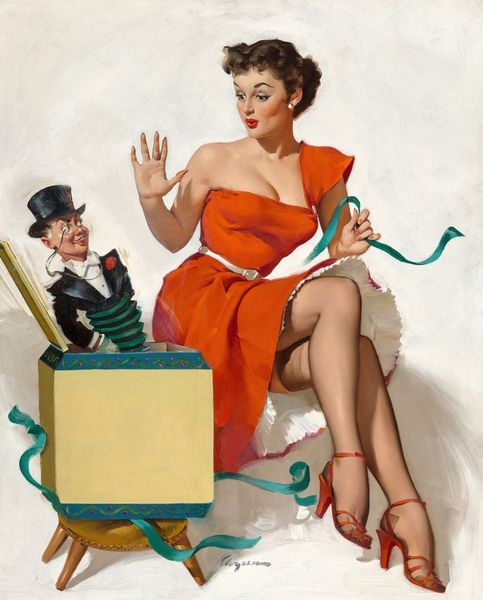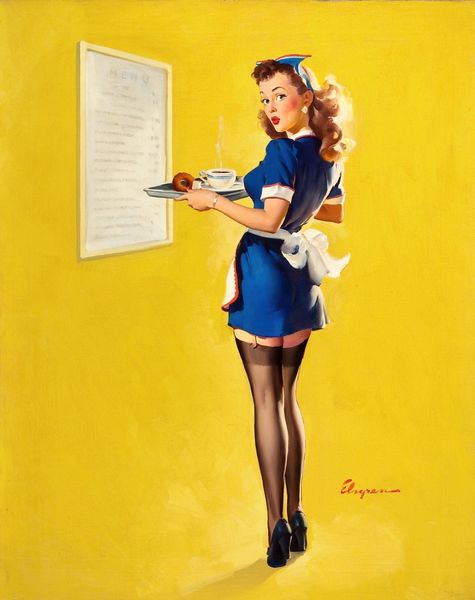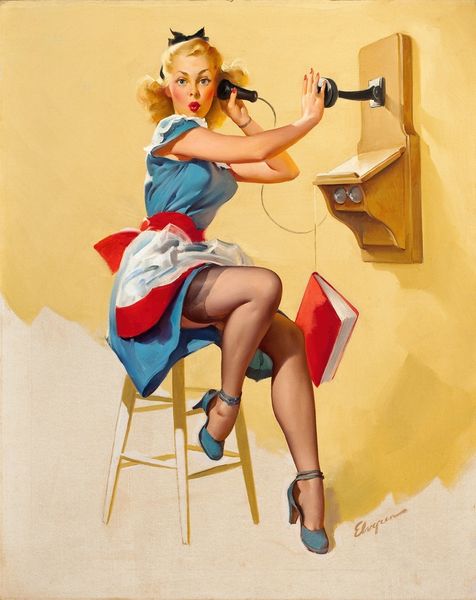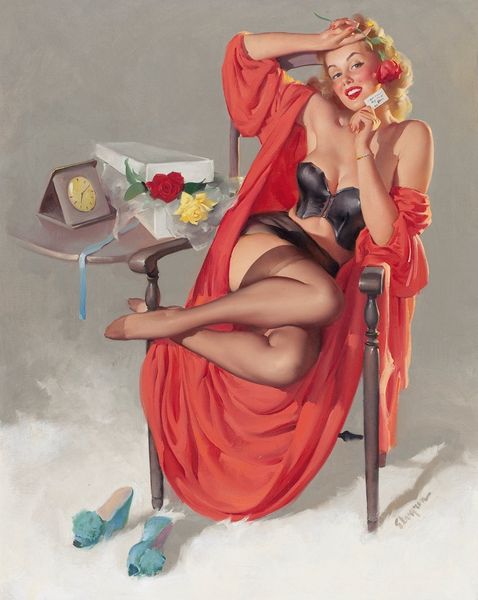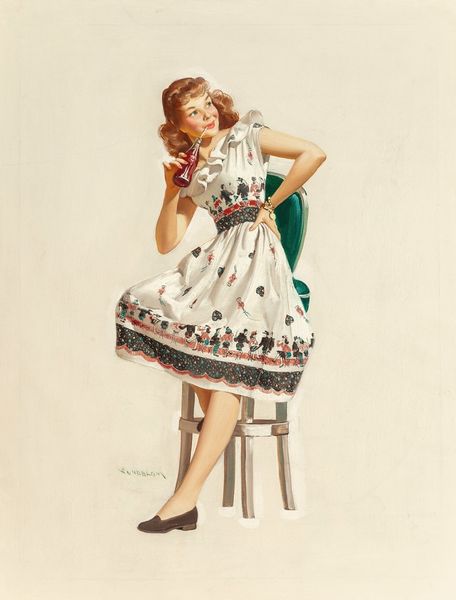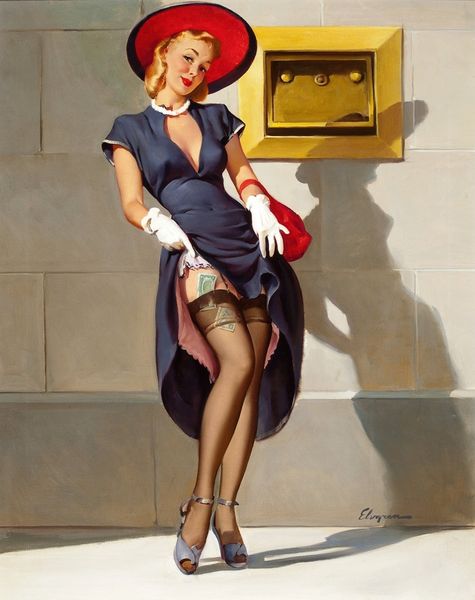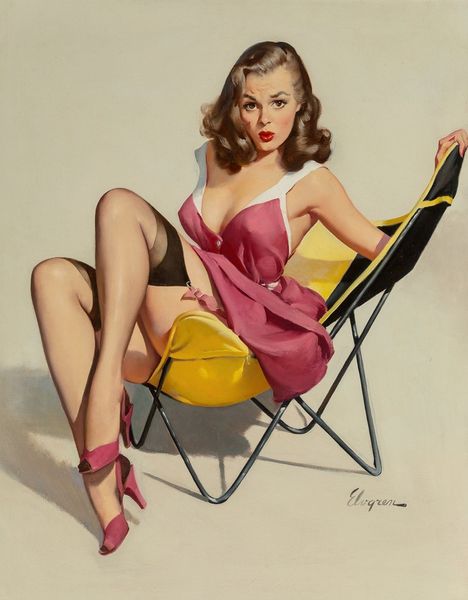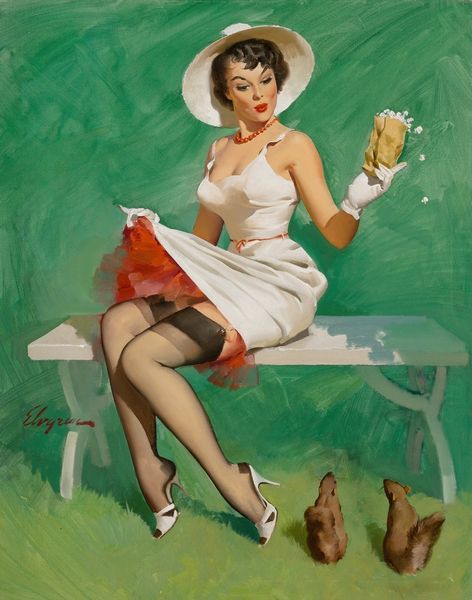
Copyright: Modern Artists: Artvee
Curator: Let's discuss Gil Elvgren’s “Doggone Good” from 1959, executed in oil paint. Editor: It strikes me immediately as classically mid-century; playful, lighthearted. It evokes a certain post-war optimism and idealization of the domestic sphere. Curator: Note how the artist crafted this idealized vision using oil on canvas, the tools of which serve as material conveyors of gendered labor of this particular time. Elvgren's process reflects the commercial context for pin-up art, and the objectification inherent in its consumption. The slick, polished surface conceals the industrial machine churning beneath. Editor: I'd add that the seemingly innocent scene—a woman "sawing" wood as the family dog serenades—hints at the societal roles women were encouraged to inhabit and, perhaps subvert. We see here how these images reinforce then play with social mores by featuring a female character seemingly doing work for a living or engaging in musical production in what can be interpreted as both playful pastiche and subversive appropriation of normative gender roles. Curator: Precisely. It prompts reflection about mass-produced images' circulation, their power in defining norms around labor and bodies, and ultimately the artist’s labour and the manufacturing of desire within specific institutional spaces and exhibition structures. Editor: Beyond the sociocultural context, the dog's placement commands attention; positioned in the composition so that it "sings" is clever. These pinups reflect a significant part of cultural history and visual culture, capturing aspirations of American femininity even if we question their ideals now. What’s been lost, what’s been gained since images like this held such sway? Curator: In short, "Doggone Good" isn't just a visual piece but evidence. It showcases artistic means utilized in specific historical, societal, and gender-inflected conditions which inform the painting. Editor: Indeed, viewing art through the lens of history opens discussions regarding representation, popular imagination, and their reverberating implications, allowing us today to analyze our progress since 1959.
Comments
No comments
Be the first to comment and join the conversation on the ultimate creative platform.

